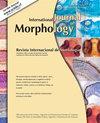护生手持角度、手握力、侧捏力与手功能指数的相关性评价
IF 0.5
4区 医学
Q4 ANATOMY & MORPHOLOGY
引用次数: 0
摘要
卫生专业人员,特别是护士,经常与病人接触,他们可能有很高的肌肉骨骼问题发生率。因此,握力和搬运角度是所有卫生专业人员成功完成工作和避免受伤的重要参数。目的探讨193名护生握力、握力、优势手和非优势手的握持角度以及手功能指数与形态计量学测量的关系。优势侧载角均值为169.11±4.21°,非优势侧载角均值为168.16±4.30°。手握力优势侧均值为45.99±11.24 kg,非优势侧均值为45.89±11.34 kg。侧向夹紧强度均值分别为19.55±3.75 kg和19.31±3.45 kg。这篇论文的发现对解剖学家、临床医生、外科医生、法医学家、人类学家和护士等专家来说可能很重要——这些医疗保健专业人员与患者保持联系。此外,我们相信,适当和有效的搬运角度、手握和横向捏紧强度的知识,为减少与工作相关的风险因素的研究创造了机会。本文章由计算机程序翻译,如有差异,请以英文原文为准。
Evaluation of the Association Between Carrying Angle, Hand Grip Strength, Lateral Pinch Strength, and Hand Functional Index in Nursing Students
Health professionals especially nurses have ongoing contact with patients and they may have a high incidence of musculoskeletal problems. For this reason, grip strength and carrying angle are important parameters for all health professionals to succeed in their job and avoid injuries. It was aimed to determine the effects of the hand grip, and pinch strength, carrying angle of dominant, and non-dominant hands as well as the association of the hand functional index with morphometric measurements in 193 nursing students. The means of the carrying angle of dominant and non-dominant sides were 169.11±4.21° and 168.16±4.30°, respectively. The means of the dominant and, non-dominant sides of hand grip strength were 45.99±11.24 kg and 45.89±11.34 kg, respectively. The lateral pinch strength means were measured as 19.55±3.75 kg and 19.31±3.45 kg, respectively. This paperâs findings may be important for some experts such as anatomists, clinicians, surgeons, forensic scientists, anthropologists, and nurses- healthcare professionals keep in touch with patients. Also, we believe that appropriate and effective knowledge of carrying angle, hand grip and lateral pinch strength has created an opportunity to research in terms of reducing work-related risk factors.
求助全文
通过发布文献求助,成功后即可免费获取论文全文。
去求助
来源期刊

International Journal of Morphology
ANATOMY & MORPHOLOGY-
CiteScore
0.90
自引率
20.00%
发文量
110
审稿时长
3-8 weeks
期刊介绍:
The International Journal of Morphology (Revista Internacional de Morfología) (Print ISSN 0717-9367; Online ISSN 0717-9502) is an official publication of the Chilean Society of Anatomy, Argentine Association of Anatomy and Panamerican Association of Anatomy. It is the continuation of Revista Chilena de Anatomía (Chilean Anatomical Journal) and is published bimonthly. The six issues published yearly constitute one volume. This journal covers morphology in all its aspects, Gross Anatomy, Histology and Developmental Biology, as well as human and animals morphological aspects, including Celular, Molecular, systems or Evolutionary Biology. Reviews, short and brief communications and Letters to the Editor are also accepted.
 求助内容:
求助内容: 应助结果提醒方式:
应助结果提醒方式:


